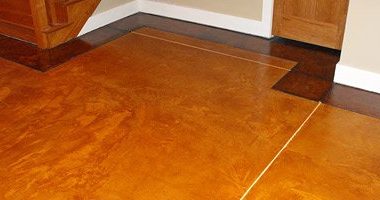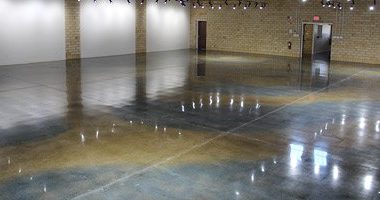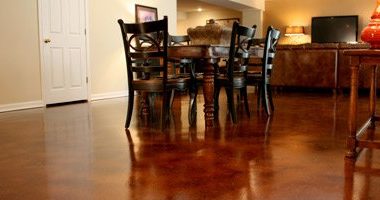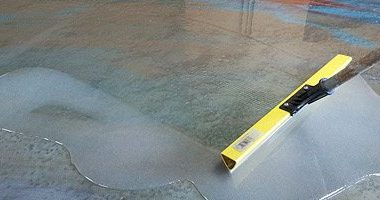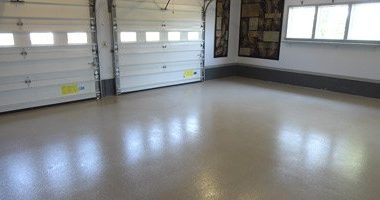Control joints are cuts placed into the concrete at the time of pouring, or shortly after, to control random cracking in concrete. This works by creating a weakened area in the slab — concrete cracks follow the path of least resistance.
Author: Nick Dancer
A New Way to Look at Decorative Concrete in Art Galleries
The finished floor of this art center brings in the arts wherever applicable. The new floor was one of the major changes to the space, and it presented the perfect opportunity to showcase local talent in artists who could work with concrete. Instead of creating a neutral floor, we went for bright and vibrant.
Pouring Concrete with Acid Staining in Mind
When preparing a brand new concrete surface to be acid-stained, don’t take anything for granted. Every step of the new concrete pour contains elements that might affect the quality of your acid stain job.
Comparing Thick-Build Concrete Sealers to Thin-Build Concrete Sealers
The market for concrete sealers is vast and it seems that there is almost every imaginable way to protect and enhance concrete floors. For the purpose of this article we are going to discuss two options that involve a clear sealer.
How to Compete With and Win Against DIY Garage Floor Kits
If you want to install garage floor coatings properly and create a profit, you must understand that not everyone is your customer. The price tag on the kit in the box store has already created a perceived value or cost to complete the job in many customers’ mind.
Controlling Customers’ Reactions to Reactive Stains
Expectations of what a floor should look like will vary from client to client. A client’s views will be shaped by other stained floors seen in person or in photographs. Although all of these things can affect a client’s expectations, the greatest influence on their flooring decision should come from the concrete professional.
